Top 5 studio lighting tips for 3D artists
From product packaging to cars: the essential rules for a well-lit render.
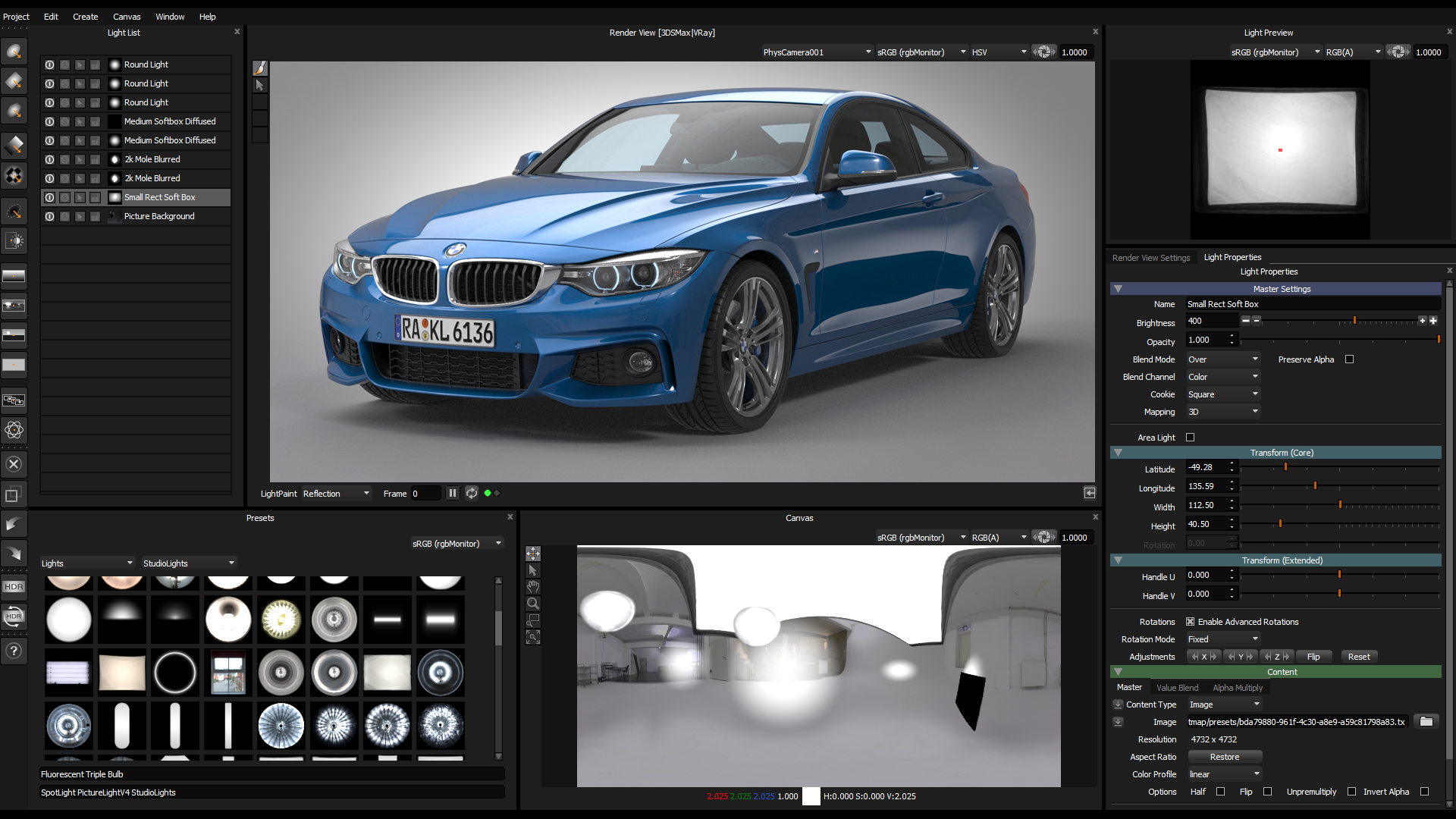
Mark Segasby is co-founder of Lightmap, developers of HDR Light Studio lighting software.
Lighting makes a huge difference to the quality and effectiveness of any final render. After hours of hard work modelling your scene, it deserves to be seen in its best light. However, lighting is often undervalued or even misunderstood by 3D artists, and it's not easy to find trustworthy resources on the topic. Here are my own top 5 tips to help artists avoid common mistakes – and score a well-lit studio shot.
01. Use the right models and materials
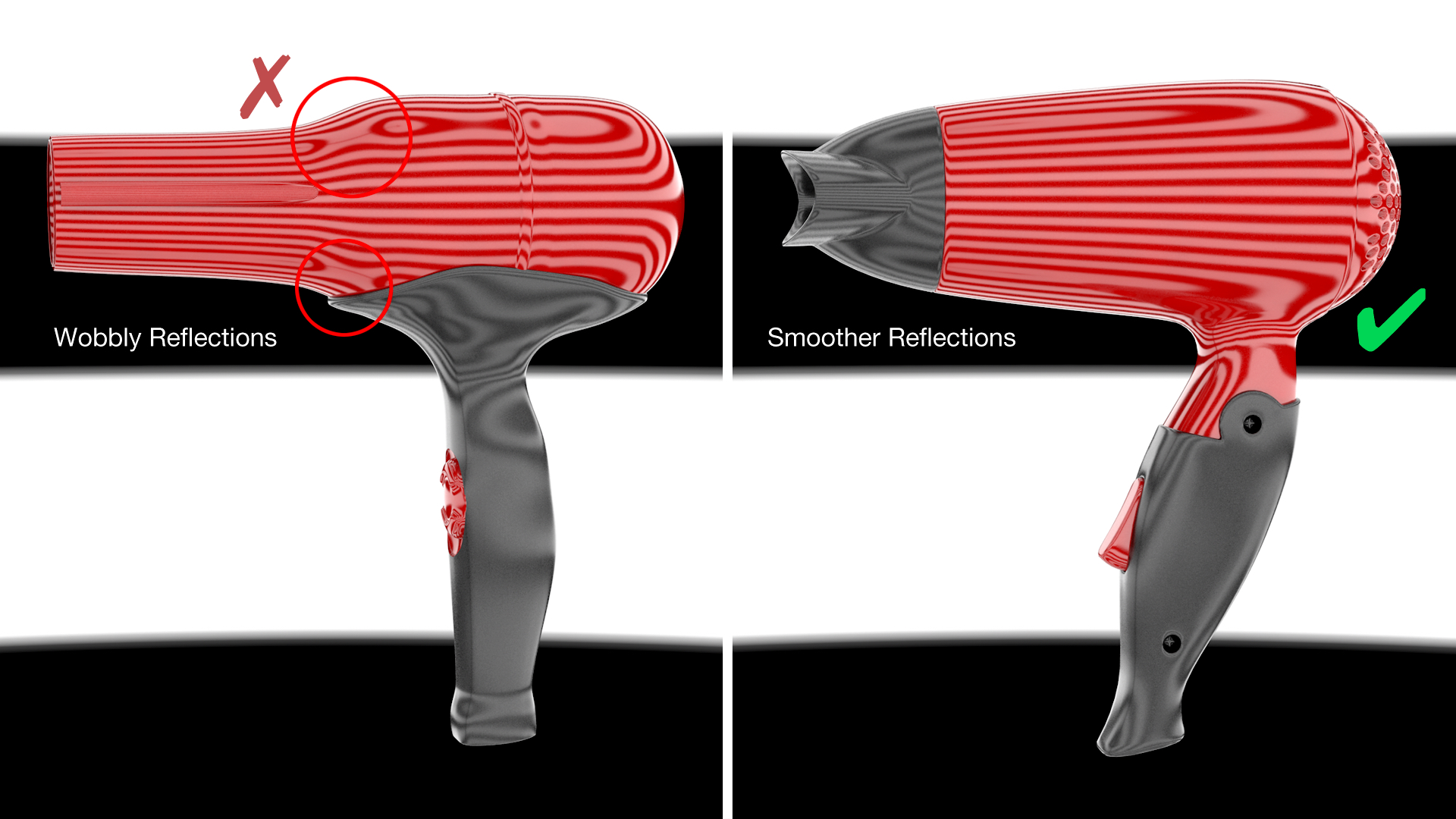
If your model or materials are not right, the lighting process will (quite literally) highlight this. You can be fooled into thinking your model looks great in the viewport. But try checking it inside a zebra striped HDRI map to see how those lines are reflected on the model's surfaces. Render the model at different angles and see if you can spot any issues. Strange, wobbly reflections will show that the modelled surface is not as smooth as you might think. You'll thank yourself for fixing modelling issues early – they'll only appear worse in the final render with lighting.
If the materials are not correct, they will react incorrectly to reflections from your lighting. Try testing your model in a variety of HDRI maps, such as studios, and indoor and outdoor environments. Does chrome look like chrome? Does metallic paint look metallic? Basically – does it look real? If you don't get the materials correct now, you will need to keep tweaking them during the lighting process. If you get your materials right first, lighting will be much easier later.
02 Give your light sources character
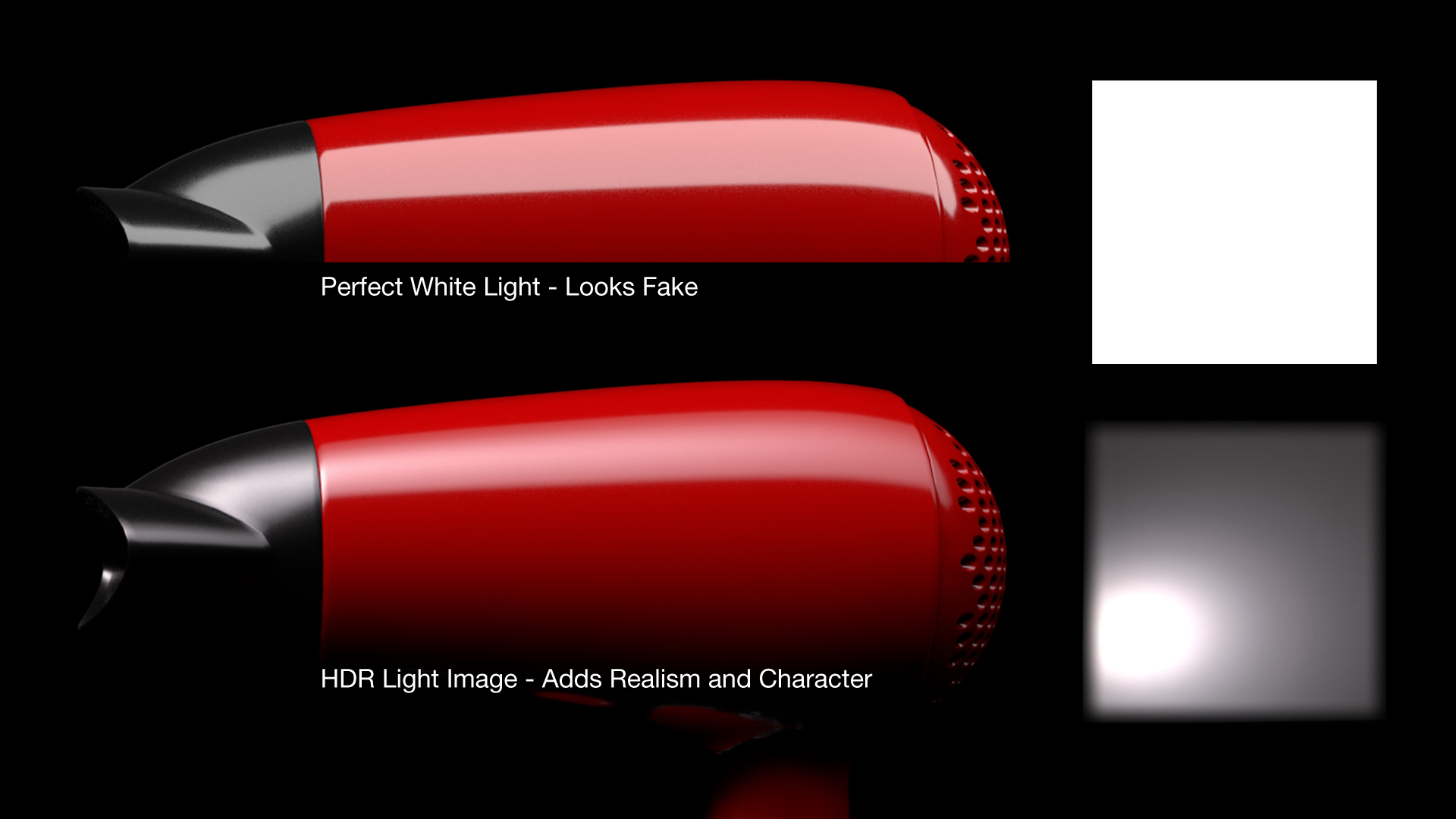
The appearance of light sources in reflections is essential. A perfect, white rectangle will look fake – real world lights have a shape, as well as hotspots where the light is brightest. They have character and imperfections. 3D artists are often aware of the importance of texturing their model, but the same goes for lighting. Using a library of HDR light source images to map to your area lights is ideal, or you can use gradients in your 3D software to create a more realistic effect.
03. Lighting can reveal materials and form
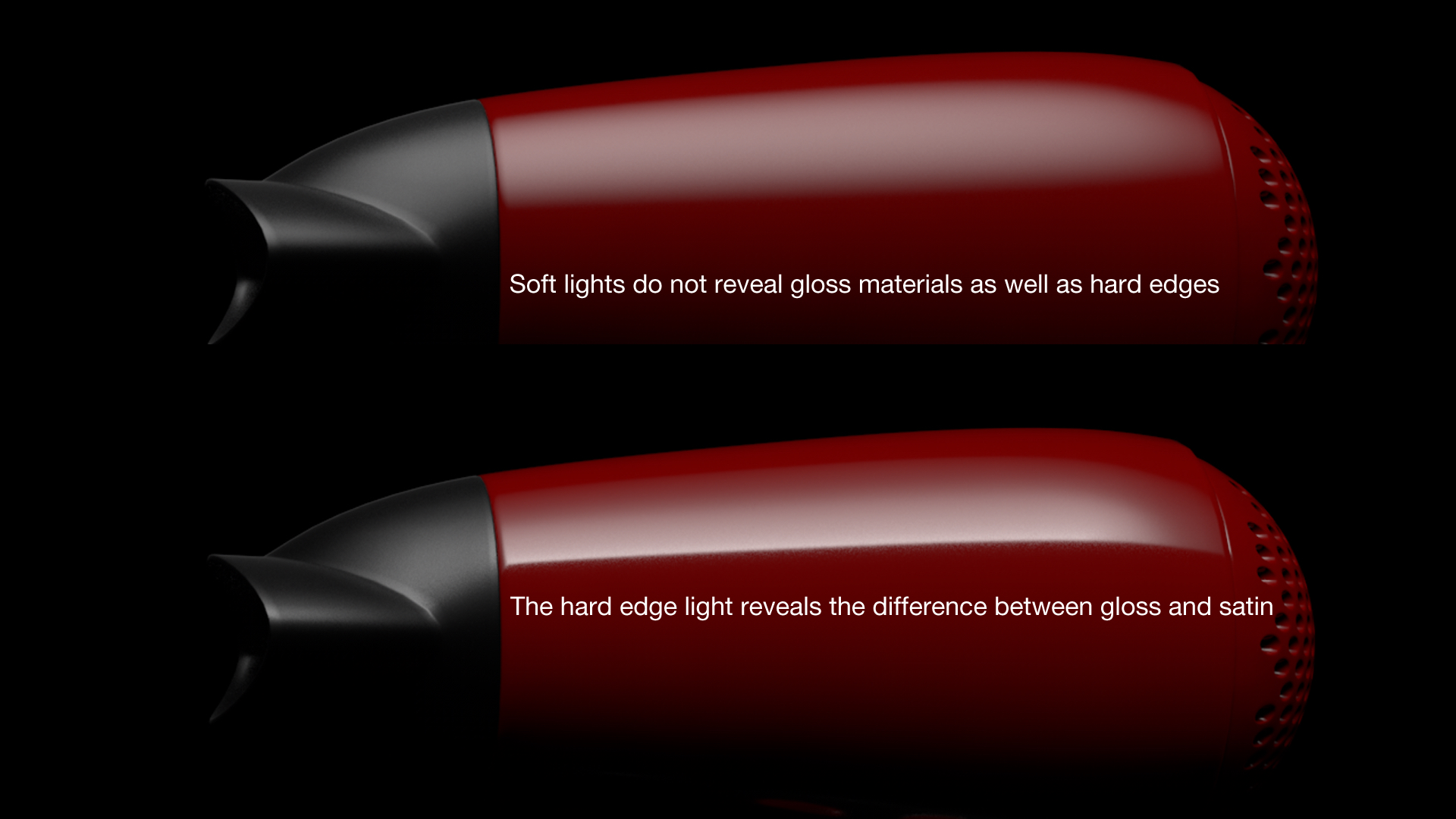
The product being lit is most likely made from various materials. If a single light reflects across a change in material, this reflection will give the viewer a clue as to what those materials are. In product shots, hard-edged lights are often used to highlight this. The edge remains sharp when reflected in chrome or glass, and the reflection spreads on more textured materials.
The form is the actual shape of the object. Lighting should help to communicate this. Reflections should flow in the direction of the form, not against it. Remember, a good product shot visually describes the product to the viewer.
Off-the-shelf HDRI maps can be too generic when it comes to lighting products. For a realistic result, you need to perfectly position and control each light to reveal the model's materials and form.
04. Avoid unwanted reflections
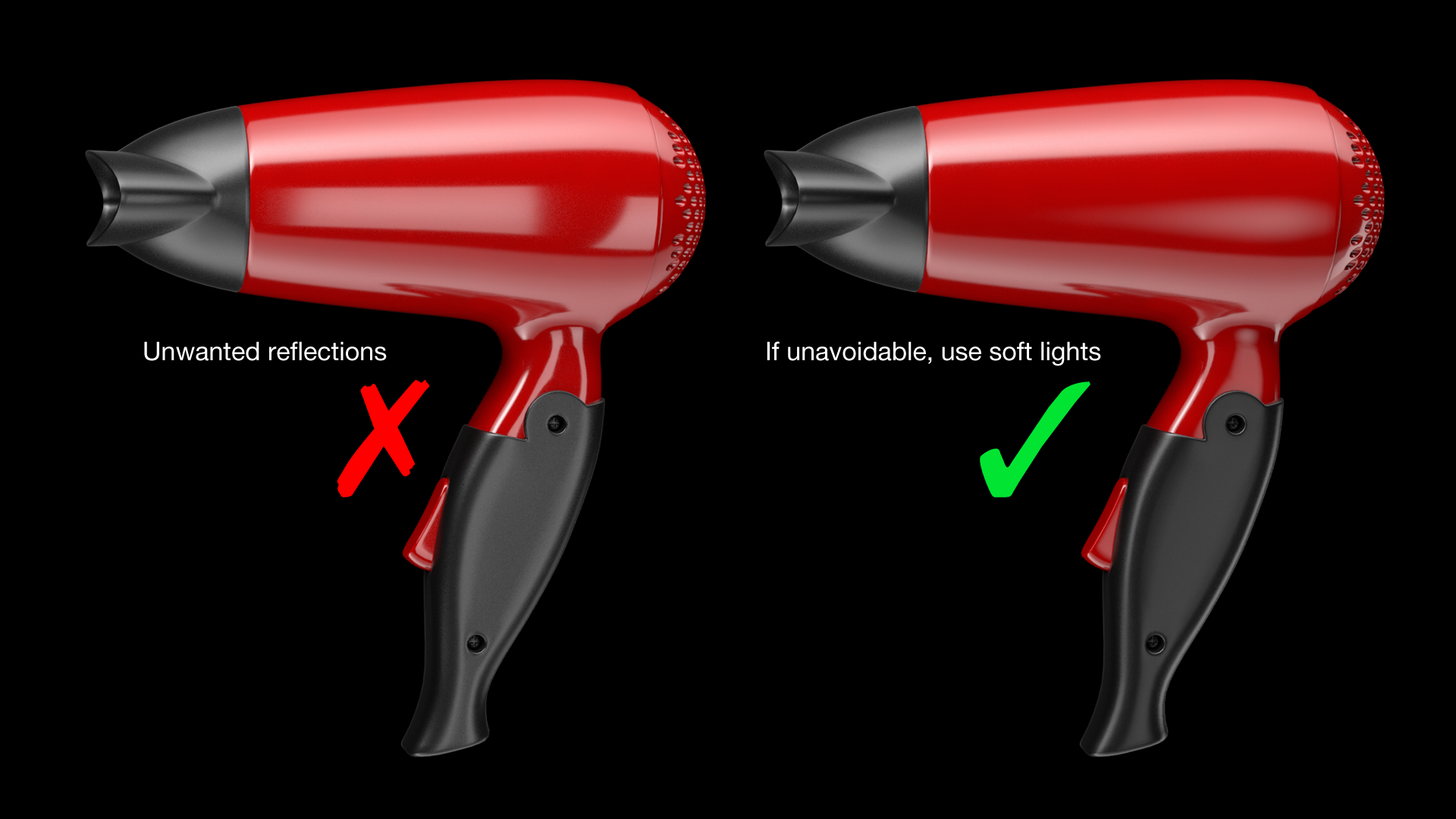
Sometimes you will place a light in a position that creates a really great reflection effect, only to find it creates another awful, unwanted effect somewhere else on the model. Really, you should reposition the light to avoid these unwanted effects, but sometimes they are unavoidable. Try using a softer light appearance – these are much more forgiving when seen in reflections.
05. Keep it simple
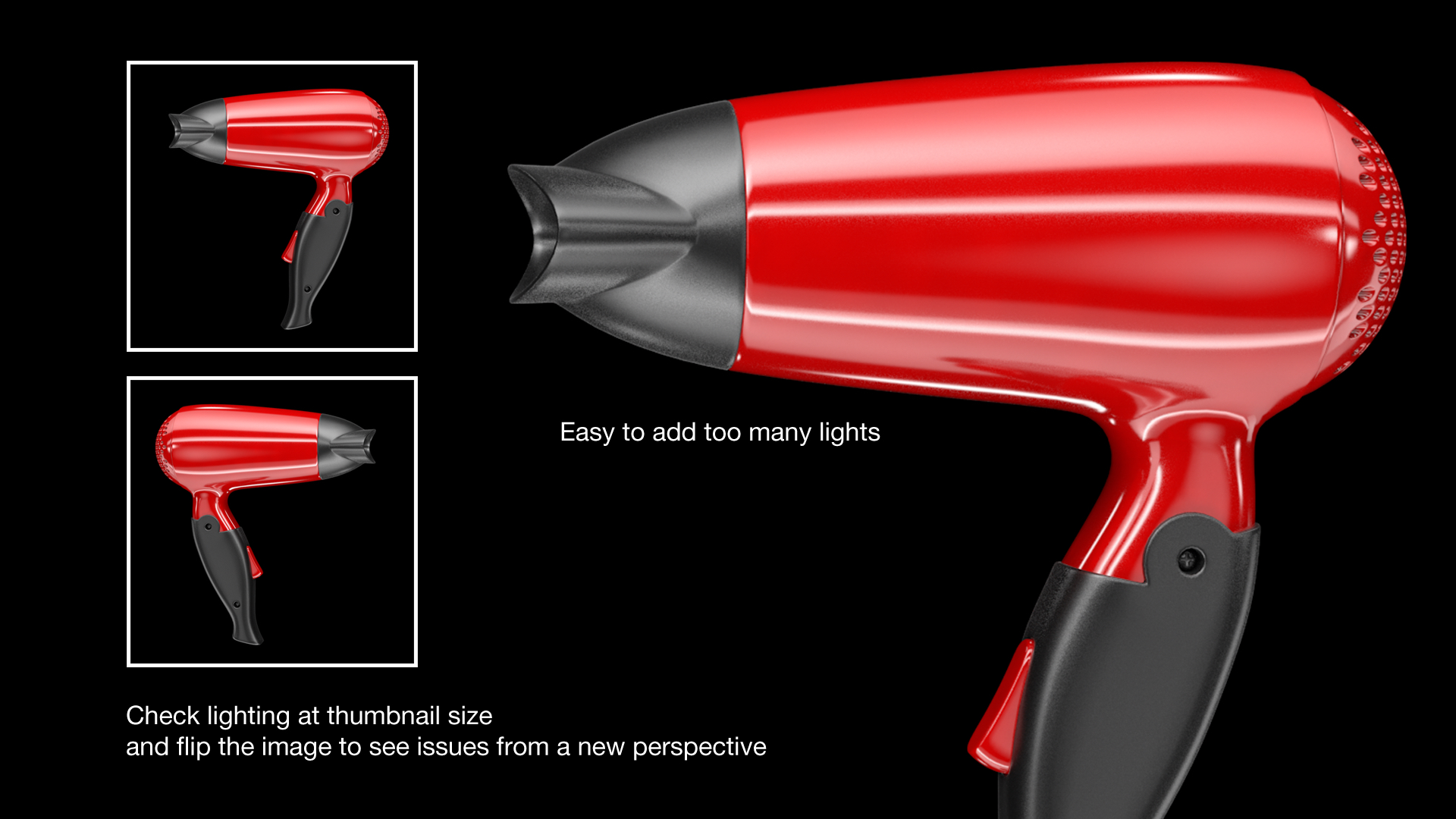
You can't run out of lights using 3D software, so it’s easy to create too many. In a real photography studio, only a handful of well-placed lights are used, each added to create a specific effect. So, when lighting your shot, research how others have lit the same type of product when photographing it, and use these images for reference.
It's easy to work out what type of lights have been used by looking at the reflections. Many successful 3D artists have learned to light by using reference images. Remember, photography is the benchmark by which all CGI product shots are judged, so we can learn a lot from it.
Once your shot is lit, look at your render as a small thumbnail. It should still look good, which means you should still be able to recognise the form and materials, and the lighting shouldn't be distracting. It's easy to focus on one small area of lighting and forget about the image as a whole. If it doesn't look right as a small thumbnail, you probably need to simplify the lighting.
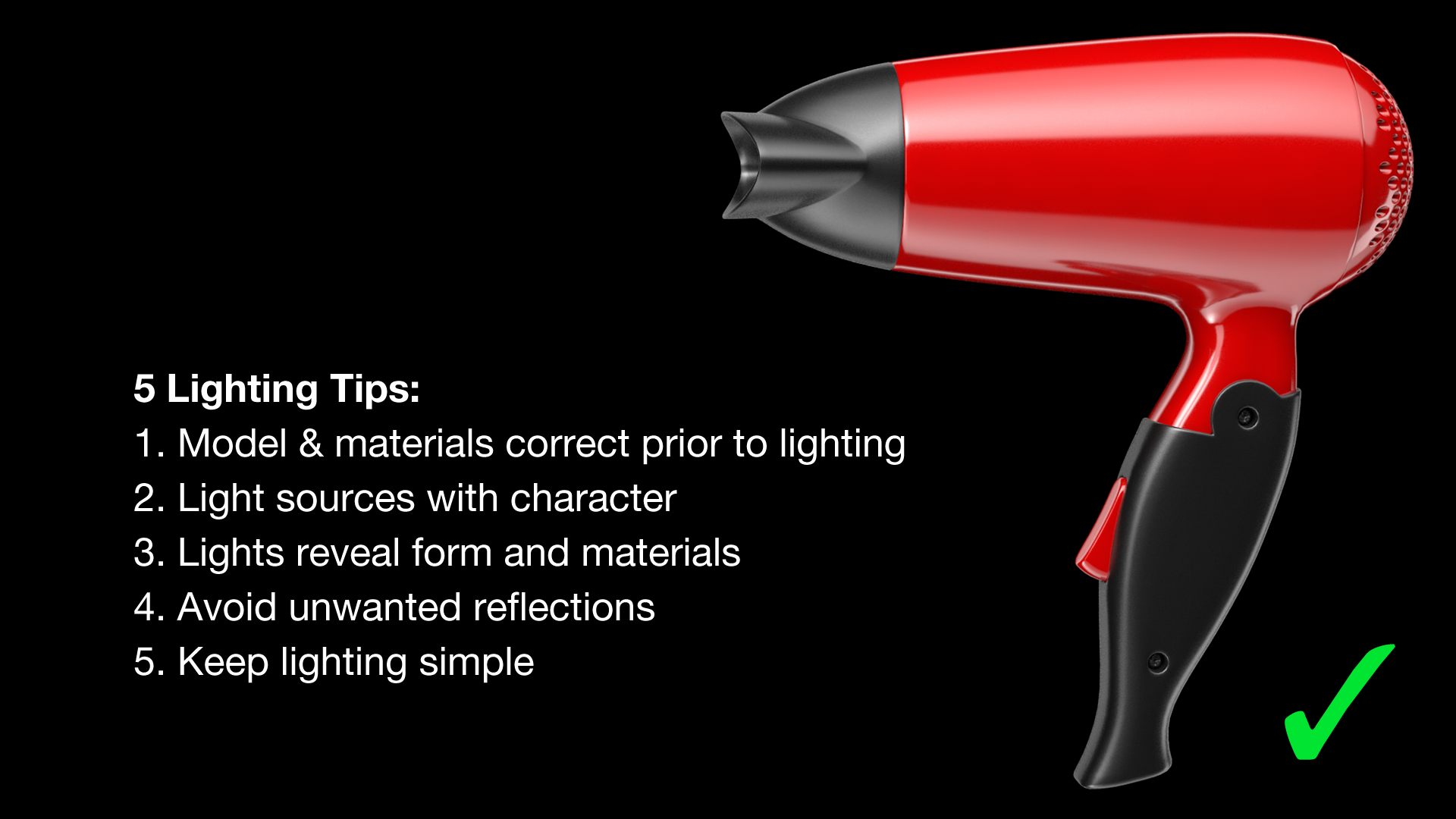
Follow these five tips, and your lighting should look great.
HDR Light Studio is a 3D lighting app that connects to your existing 3D software and vastly improves the lighting process. Lighting becomes as easy as 'drag and drop'. HDR Light Studio ships with a vast range of HDR studio light source images, so you have the right light appearance at hand for any project shot.
Try HDR Light Studio for free at: www.lightmap.co.uk (prices start at £95 for a 1 year Indie licence).

Thank you for reading 5 articles this month* Join now for unlimited access
Enjoy your first month for just £1 / $1 / €1
*Read 5 free articles per month without a subscription

Join now for unlimited access
Try first month for just £1 / $1 / €1
Get the Creative Bloq Newsletter
Daily design news, reviews, how-tos and more, as picked by the editors.
Mark Segasby is co-founder of Lightmap, developers of HDR Light Studio lighting software.
